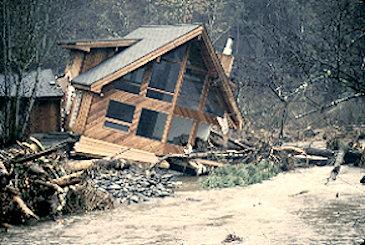Institutional Recommendation 16
Regulatory Improvement and Coordination
Manage activities affecting anadromous fish in a timely manner that implements restoration and recovery through adaptive management, or “learning by doing,” and using existing institutional structures and modifying them as necessary to provide sufficient accountability for timely increases in survival and meaningful participation for the tribes.
Issue
Restoration of Columbia Basin salmon, sturgeon and lamprey depends upon institutional structures that efficiently coordinate the actions, goals and resources of relevant government agencies and enlist the support and energy of individuals and non-governmental agencies. Because of the limits of scientific knowledge about these species in specific ecosystems, an effective monitoring and evaluation program is indispensable for charting restoration progress and indicating the need for mid-course correction. For more on this, see the Monitoring, Research and Evaluation update. Finally, when policy-makers, technical experts or implementers differ on the means for restoration, timely dispute resolution processes must be available at functional levels to address issues in a manner that does not stall the effort. Also see Dispute Resolution and its update.
The right of the tribes to govern their members and manage their territories and resources flows from tribal sovereignty as recognized by treaty. In general, tribal governmental powers are described as “inherent powers of a limited sovereignty which has never been extinguished.” The tribes’ status as one of three sovereigns is recognized in the Constitution and has been upheld by the courts since the early years of the Republic. Treaties made with Indian tribes, indeed the fact that treaties were made, reflects the federal government’s recognition of tribal sovereignty.
In the realm of treaty fishing rights, the tribes, states and federal government share the responsibility to protect and enhance fish habitat as co-tenants. In addition to the concept of a co-tenancy regarding the fishery resource, the United States stands in a trust or fiduciary relationship to Indian tribes. The trust relationship is a legal doctrine embodying the many political promises made by the federal government to tribes. The trust doctrine governs all aspects of federal government actions that affect Indian tribes.
The treaty promises of the United States to protect the aboriginal right of our tribes to take fish at all of our usual and accustomed fishing places precedes all other laws affecting the Columbia Basin and were not diminished by those laws.
For the last 30 years, treaty fishing rights cases and the federal trust responsibility toward Indian tribes have been major factors in the evolution of institutional structures for the management and protection of Columbia Basin salmon fisheries. From a tribal perspective, the development of management institutions in the basin reflects and must continue to reflect the implementation of treaty promises through the development of joint or co-management strategies by the tribes, the states and the federal government.
Now the primary goals of the tribes, the states and the federal government are to rebuild weak runs to full productivity and fairly share the harvest of upper river runs between treaty Indian and non-treaty fisheries in the ocean and Columbia River Basin. As a means to accomplish this purpose, these parties intend to use habitat protection authorities, enhancement efforts and artificial production techniques as well as harvest management to ensure that Columbia River fish runs continue to provide a broad range of benefits in perpetuity.
Actions Needed
- Regulatory entities need to manage activities affecting anadromous fish in a timely manner that implements restoration and recovery through adaptive management, or “learning by doing.”
- Use existing institutional structures and modifying them as necessary to provide sufficient accountability for the parties with direct responsibilities to ensure timely increases in survival and meaningful participation for the tribes whose very existence is dependent upon restoration and recovery.
Desired Outcome
Tribes, states and the federal government establish accountable processes to meet defined goals and objectives for salmon restoration in a time specific manner.






